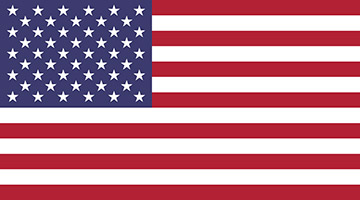
eSignature Legality Summary
eSignatures are legally valid and admissible in the court of law. USA follows an open model where e-signature can be submitted in court. Specific use cases for eSignatures are indicated in the Uniform ET Act.The Uniform Electronic Transactions Act (UETA) and the Electronic Signatures in Global and National Commerce Act (ESIGN) in 2000 have meant businesses are able to use e-signatures when trading. Both ESIGN and UETA highlight that electronic documents and e-signatures are seen in the same legal standing as traditional ways of completing contracts. This shows that electronic documents and signatures can’t be rejected simply for being electronic. The Federal Rules of Evidence and the Uniform Rules of Evidence generally allow for electronic records and their reproductions to be admissible into evidence. The United States has a history of being an Open, business-friendly, eSignature technology-neutral environment.
*The information on this site is "AS IS" and for general information purposes only.
Use Cases for eSignatures ?
Use cases where an SES is typically appropriate include:
- Speedy HR document preparation with preapproved templates, easy update of each employee, new employee onboarding processes as well as 360 degree view of employee files.
- End user agreements including sales & service terms, new retail account opening documents, invoices, shipment details, user manual, EULAs, policies
Use Cases for Qualified Signatures ?
Use cases where an AES is typically appropriate include:
- Purchase, procurement and commercial agreements including invoices, trade and payment terms, certificates, NDAs, sales & distribution agreements, order acknowledgements.
- Real estate lease agreements for residential and commercial purpose
Use Cases that are not appropriate for Electronic Signatures
Use cases that are specifically barred from digital or electronic processes or that include explicit requirements, such as handwritten (e.g. wet ink) signatures or formal notarial process that are not usually compatible with electronic signatures or digital transaction management.
- Wills, codicils, and testamentary trusts
- Adoption, divorce agreements
- Court orders or notices, or official court documents
- Contracts or Documents governed by the Uniform Commercial Code (“UCC”)
- Notices of default, acceleration, repossession, foreclosure, or eviction regarding primary residence
- Termination of health or life insurance benefits
- Health or safety recall or material failure notices of a product
- Documentation for transportation or handling of hazardous or toxic materials
List of Local Trust Service Providers
| Institute | Regulatory Body/CA/DSC Providers | Supported by emSigner | Website |
|---|---|---|---|
| Comfortable | CA | Yes | www.comodo.com |
| Digicert | CA | Yes | www.digicert.com |
| DocuSign, Corporation | CA | Yes | www.docusign.com |
| Entrust Datacard Limited | CA | Yes | www.entrust.com |
| GeoTrust, Inc. | CA | Yes | www.geotrust.com |
| GMO GlobalSign, Inc. | CA | Yes | www.globalsign.com |
| IdenTrust, Inc. | CA | Yes | www.identrust.com |
| NGWeb Solutions, LLC | CA | Yes | www.ngwebsolutions.com |
| Thawte, Inc. | CA | Yes | www.thawte.com |
| Symantec Corporation | CA | Yes | www.symantec.com |
| MaxMD/Park Avenue Capital, LLC | CA | Yes | www.maxmddirect.com |
“Digital Signature” means a transformation of a message using an asymmetric cryptosystem such that a person having the initial message and the signer’s public key can accurately determine
(a) whether the transformation was created using the private key that corresponds to the signer’s public key;
(b) whether the message has been altered since the transformation was made
[1] An AES is an “advanced electronic signature”, a type of electronic signature that meets the following requirements:
(a) it is uniquely linked to the signatory;
(b) it is capable of identifying the signatory;
(c) it is created using means that are under the signatory’s sole control;
(d) it is linked to other electronic data in such a way that any alteration to the said data can be detected.
[2] A QES is a specific digital signature implementation that has met the particular specifications of a government, including using a secure signature creation device, and been certified as ‘qualified’ by either that government or a party contracted by that government.
External Resources
http://www.uniformlaws.org/shared/docs/electronic%20transactions/ueta_final_99.pdfhttps://www.gpo.gov/fdsys/pkg/PLAW-106publ229/pdf/PLAW-106publ229.pdf
eMudhra, and all associates including agents, officers, employees or affiliates, are not liable for any direct, indirect, incidental, special, exemplary or consequential damages.

